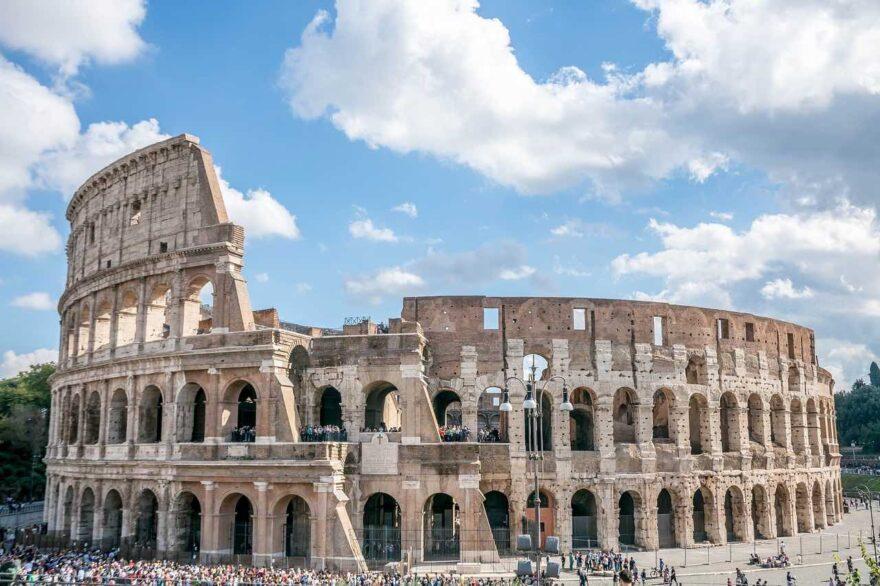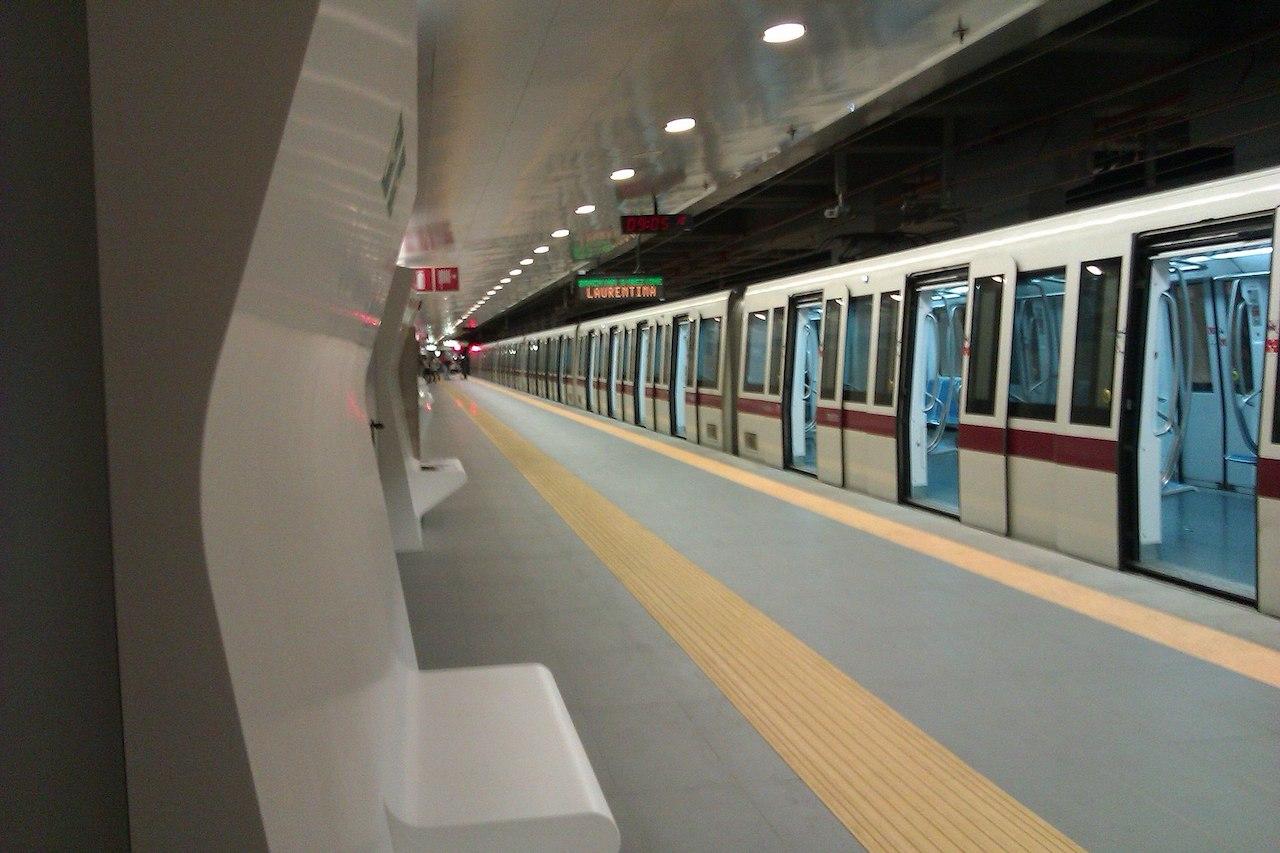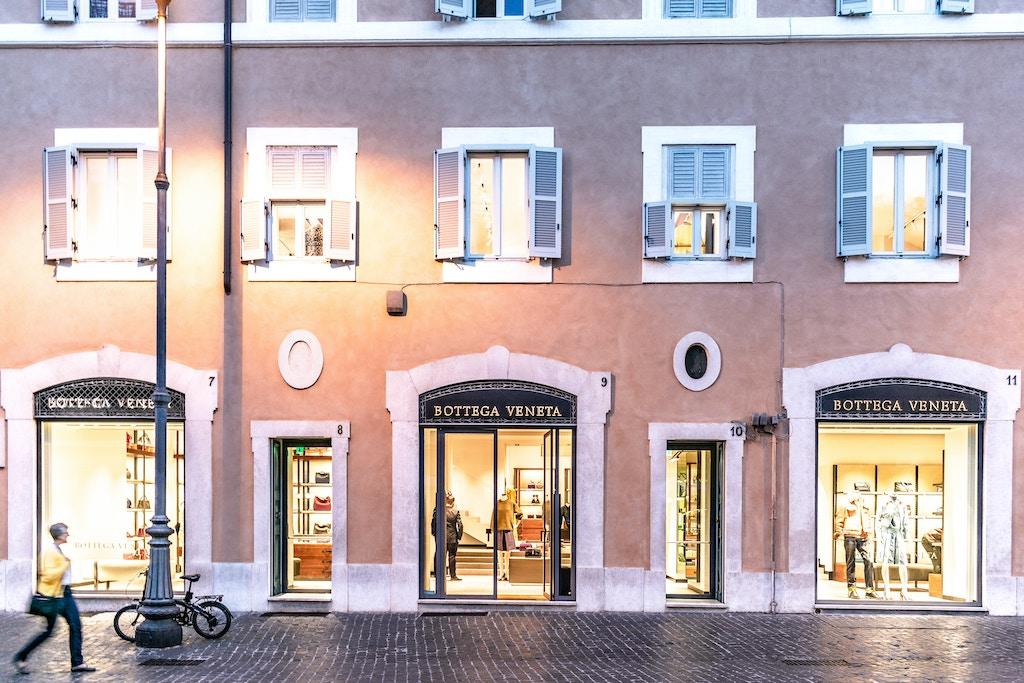Table of Contents
Length of Travel in Rome
For first-time visitors, a minimum of 3 to 4 days is recommended.
A stay of 5 to 7 days will allow you to visit some lesser-known sites, and even take a day trip or two to nearby destinations, such as Tivoli, Ostia Antica, or the Castelli Romani.
For those with a particular interest in history, art, or cuisine, you may wish to spend even longer in Rome to fully immerse yourself in the city’s rich cultural heritage.
Best Time to Travel to Rome
April and May: Spring is an ideal time to travel to Rome, offering pleasant weather and blooming landscapes. Be aware that during Easter, the city can be quite busy, and peak rates may apply. If you plan to visit during this period, make sure to book accommodations and activities in advance.
June and September: These months offer a great opportunity to visit Rome while avoiding the peak summer crowds. During June and September, the weather is still warm and pleasant, but the city is less congested compared to the busy months of July and August. This allows you to explore Rome’s attractions more comfortably and with shorter wait times, making it an excellent time to experience the city’s rich history and culture.
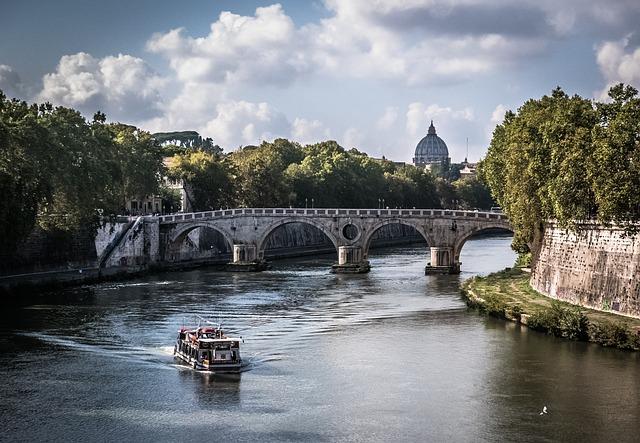
October: Autumn in Rome is a fantastic time to visit, as the city hosts numerous festivals and events. The weather remains mild, making it perfect for exploring regional sites and attractions. With fewer crowds than summer, you can enjoy a more relaxed pace while discovering the beauty of Rome and its surroundings.
Rome’s Top Travel Destinations
- Colosseum (~2 hours):
The Colosseum is an iconic amphitheater in Rome, known for its grandeur and history as a venue for gladiatorial contests and public spectacles. The Colosseum is a must-see attraction on any Rome travel itinerary, as it is an iconic symbol of the city’s ancient history.- Official Tickets Recommended Pre-booking Online
- Standard ticket € 16.00
- Reduced Price for 18-25 year-old EU Citizen €2.00
- Less than 18 year-old is free
- Online Reservation fee € 2.00
- The ticket includes three sites: Colosseum + Roman Forum + Palatine Hill
- To find our how to book Full Experience Ticket including arena and underground, check out the Rome Colosseum Guide.
- Palatine Hill (1 – 2 hours)
Palatine Hill is one of the seven hills of Rome and is known for its rich history and stunning views of the city. It is considered the birthplace of Rome and is home to several ancient palaces and ruins.- Official Tickets Recommended Pre-booking
- Standard ticket € 16.00 + Online Reservation fee € 2.00. Tickets include Colosseum and Roma Forum.
- Check out the Roman Forum and Palatine Hill Guide.
- Roman Forum (1 – 2 hours)
The Roman Forum is a sprawling archaeological site in Rome, Italy, containing the ruins of ancient government buildings, temples, and markets. It was the center of political and social activity in ancient Rome and is now a popular tourist attraction.- Official Tickets Recommended Pre-booking
- Standard ticket € 16.00 + Online Reservation fee € 2.00. Tickets include the Colosseum and Palatine Hill.
- Check out the Roman Forum and Palatine Hill Guide.
- Bocca della Verità (Mouth of Truth) (30 minutes – 1 hour):
The Bocca della Verità is an ancient marble mask located in the portico of the Basilica di Santa Maria in Cosmedin. The mouth was originally part of a fountain, or possibly an ancient manhole cover. The legend is that if you put your hand in the mouth of the mask and tell a lie, the Bocca della Verità will bite your hand off. This ancient attraction has become a popular spot for tourists who want to test their honesty.- Free entry, no tickets required.
- Vatican Museums (2 – 3 hours)
The Vatican Museums are a collection of art and artifacts located in Vatican City, showcasing works from throughout history, including ancient Roman sculptures, Renaissance paintings, and Egyptian artifacts. They are a popular tourist destination and home to several iconic masterpieces.- Official Tickets
- Recommended Pre-booking
- Standard ticket €17.00 (includes Sistine Chapel)
- Sistine Chapel
The Sistine Chapel is a world-renowned chapel located in Vatican City, famous for its intricate ceiling frescoes painted by Michelangelo, which depict scenes from the Bible’s Book of Genesis. It is considered one of the greatest works of art in human history and is a popular tourist destination.- Ticket is included with Vatican Museums.
- Vatican Gardens (1 – 2 hours)
The Vatican Gardens are a vast network of landscaped gardens and green spaces located within the Vatican City. Spanning over 50 acres, the gardens are home to a diverse range of plant species, ornamental fountains, and historic sculptures. They are a peaceful retreat from the bustling city and are often included in guided tours of the Vatican.- Official Tickets: €21.00
- St. Peter’s Basilica (2- 3 hours)
St. Peter’s Basilica is a massive church located in Vatican City, known for its grand architecture, beautiful artwork, and historical significance as the burial site of St. Peter, the first pope.- Free entry
- Cupola access ticket €10.00 (elevator+stairs) or €8.00 (stairs only)
- Recommend to buy the (elevator+stairs), but no need to pre-booking ticket.
- Castel Sant’Angelo (1-2 hours):
Initially built as a mausoleum for Emperor Hadrian, Castel Sant’Angelo later served as a fortress and papal residence. It offers a fascinating insight into Rome’s history and excellent views of the city from its terrace.- Official Tickets
- Standard ticket €15.00 + Online Reservation: €1.00
- Piazza di Spagna & Spanish Steps (30 minutes):
A grand staircase of 135 steps, the Spanish Steps connect Piazza di Spagna and the Trinità dei Monti church, offering a picturesque spot for people-watching and enjoying Rome’s atmosphere.- Free entry, no tickets required.
- Trevi Fountain (30 minutes):
A stunning baroque masterpiece, the Trevi Fountain is a popular spot to toss a coin and make a wish, following the age-old tradition.- Free entry, no tickets required.
- Pantheon (30 minutes – 1 hour):
An ancient temple dedicated to all Roman gods, the Pantheon is a marvel of engineering and architectural design, known for its massive concrete dome and oculus.Free entry, no tickets required. Admission on weekends necessitates a reservation.News came in March 2023, Pantheon will soon start to charge €5.00 entrance fee.- Starting July 2023, tickets are required to enter Pantheon. Official Tickets
- Piazza Navona (30 minutes – 1 hour):
A beautiful square showcasing Bernini’s Fountain of the Four Rivers, Piazza Navona is lined with cafes, restaurants, and street artists, making it a perfect spot to relax and soak in the local ambiance.- Free entry, no tickets required.
- Borghese Gallery and Museum (1 – 2 hours):
The Borghese museum boasts an impressive collection of sculptures, paintings, and antiquities, meticulously curated by Cardinal Scipione Borghese. Among its most celebrated pieces are works by renowned artists such as Bernini, Caravaggio, Raphael, and Titian.- Ticket: https://galleriaborghese.beniculturali.it/en/visita/info-biglietti/
- Ticket Price: Standard/Reduce €13.00 / €2.00 + Online Reservation: €2.00, Free under 18-year old.
- Open Hours: 9am – 7pm, close on Monday, the last entrance is 5.45 p.m
- Closed 25th December, 1st January.
- Tips: The exhibits at the Borghese Gallery are incredibly beautiful, but the space is not particularly large. The location is relatively far from other attractions. Therefore, please make your final decision based on your itinerary and physical condition.
Ticket Pass for Rome Travel
There are two types of tickets available: Roma Pass does NOT include the Vatican, and Omnia Card that includes the Vatican.
A quick conclusion: Not necessary.
Roma Pass
72 Hours Pass: €52.00. (2 attractions + 72 hours public traffic + reduced ticket prices of other museums)
48 Hours Pass: €32.00. (1 attraction + 48 hours public traffic + reduced ticket prices of other museums)
Official Website: https://www.romapass.it/en/the-cards/
Full List of Museums: link and map.
Conclusion: it is not a good deal, but it depends on individual needs.
Omnia Pass
72 Hours Pass: Adult €129.00, Child (6-17) €59.00 (72 Hours Roma Pass + Vatican Museums + Hop-on Hop-off Bus)
Official Website: https://romeandvaticanpass.com/en-us/rome-attractions
Conclusion: it is not a good deal, but it depends on individual needs.
Roman Forum + Palatine Hill
Perched on the Palatine Hill, the birthplace of Rome according to legend, you’ll find the remains of imperial palaces and luxurious residences. The views from the hilltop are breathtaking, offering a panoramic vista of the Roman Forum, Colosseum, and the city beyond. Discover the ruins of the Flavian Palace, Domus Augustana, and the Stadium of Domitian, and take a moment to appreciate the grandeur and opulence of Rome’s ancient elite.
Visit Time: 2 – 4 hours, visiting the Roman Forum and Palatine Hill can take anywhere from 2-4 hours, depending on your level of interest and pace.
Forum Super Ticket: link € 18.00 The Forum Pass Super Ticket is valid for 30 days from the booking day.
To visit the internal sites of the Palatine Hill and Roman Forum, you’ll need a SUPER ticket and a well-planned itinerary. The ticket is valid for two consecutive days and covers the Colosseum, Roman Forum, and Palatine Hill. On the Palatino, the Casa di Augusto, Casa di Livia, Aula Isiaca and Loggia Mattei are open on Mondays, Wednesdays, Fridays, and Sunday mornings, while the Palatine Museum and Criptoportico Neroniano are open daily. The Roman Forum sites, including the Temple of Romulus, Church of Santa Maria in Antiqua, and Domitian’s Ramp, are open on Tuesdays, Thursdays, Saturdays, and Sunday afternoons.
Recommended to See:
Roman Forum: Arco di Settimio Severo, Tempio di Saturno, Chiesa di Santa Maria Antiqua, Casa delle Vestali, Arco di Tito
Palatino: Stadio, Domus Augustana, Casa di Livia and Casa di Augusto, Orti Farnesiani
Don’t miss the views over the Roman Forum from the Tabularium, which is a tunnel links Palazzo dei Conservatori to Palazzo Nuovo.
Ticket Purchase: Colosseum + Roman Forum + Palatine Hill Official Tickets (Recommended Pre-booking)
Ticket Price: Standard ticket € 16.00 + Online Reservation fee € 2.00. Tickets include Colosseum.
Vatican City
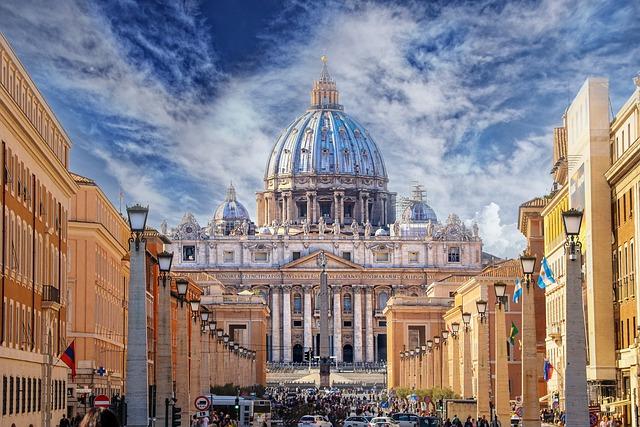
Vatican City, the smallest independent city-state in the world, is home to several iconic attractions that hold immense religious, historical, and cultural significance. Visiting the Vatican is a highlight of any Rome travel experience, as it houses some of the world’s most significant art and religious treasures.
To thoroughly explore the Vatican, set aside at least half a day. No problem for a full day visit. Key sites you should not miss include:
- St. Peter’s Basilica (2 – 3 hours): One of the world’s largest churches, this architectural marvel boasts intricate designs, stunning artwork, and the famous dome designed by Michelangelo. Plan for 1-2 hours to tour the basilica, and don’t miss Michelangelo’s masterpiece, the Pietà.
- Vatican Museums (2 – 3 hours): A vast complex housing a diverse collection of art and artifacts gathered by the Roman Catholic Church over the centuries.
Large bags, umbrellas, tripods, selfie sticks, and food and drinks must be left in the cloakroom. The cloakroom service is free of charge. - Sistine Chapel: The highlight of the Vatican Museums, Michelangelo’s breathtaking frescoes, including The Last Judgment and the iconic Creation of Adam, adorn the walls and ceiling of the chapel. Expect to spend 30-45 minutes admiring the artwork. No photos.
- Vatican Gardens (1 – 2 hours): A serene retreat featuring fountains, sculptures, and lush greenery.
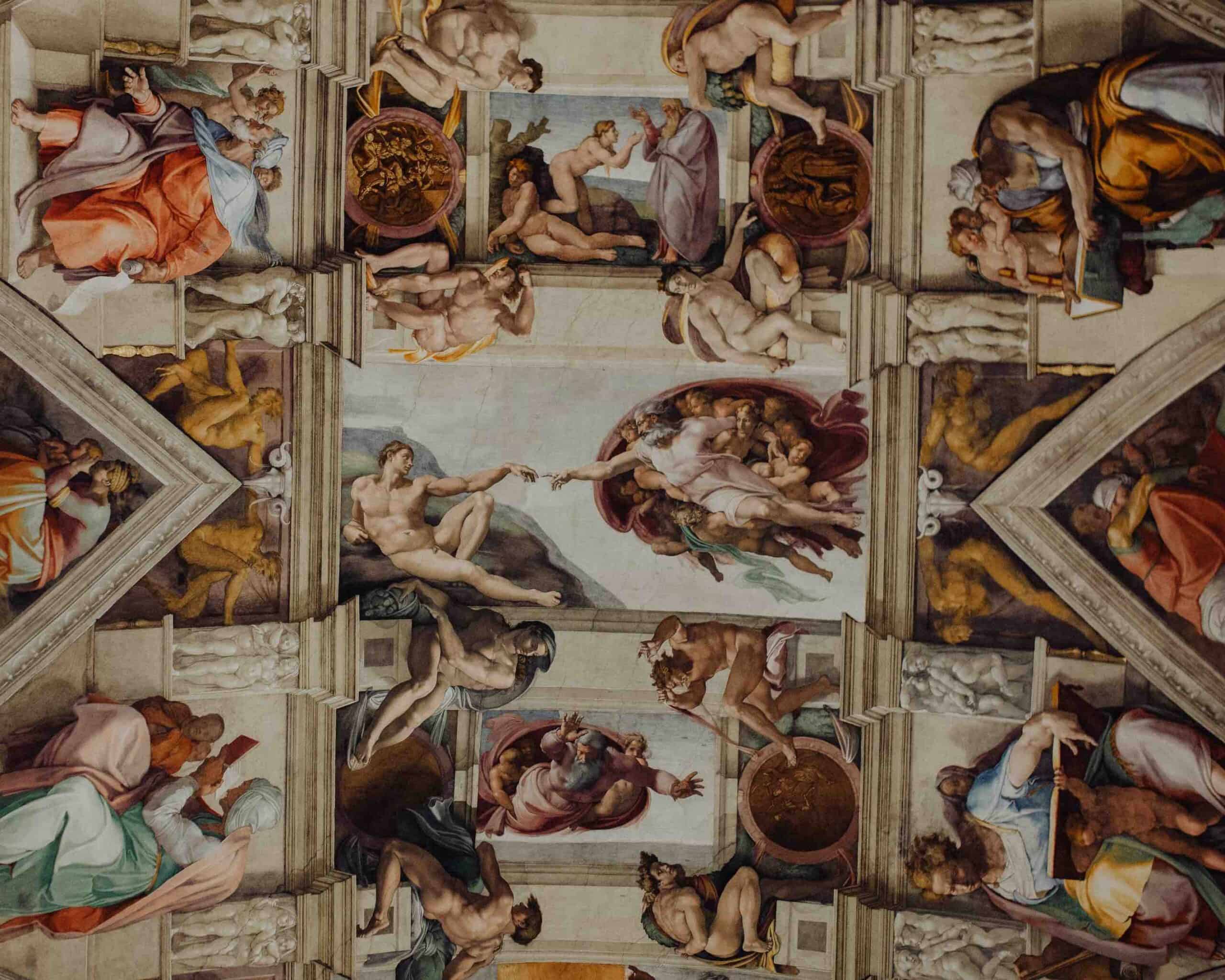
- St Peter’s Basilica
- Website: www.vatican.va
- Open Hours: 7AM – 7PM Apr- Sep; 7AM – 6PM Oct – Mar
- Dome Entrance Ticket: €10.00 for elevator (recommend), €8.00 for stairs
- Vatican Museums and Sistine Chapel
- Website: www.museivaticani.va
- Open Hours: 9AM – 6PM Mon-Sat, to 2PM last Sunday of month, last entry 2 hours before close.
- Vatican Museums and Sistine Chapel Official Tickets
- Recommended Pre-booking in peak season
- Standard ticket €17.00
- Tips 1: Last Sunday of every month the Vatican Museums are free, between 9AM to 12:30, leaving by 14:00. Tickets cannot be reserved on free visit day. Aside from the last Sunday of each month, the Vatican Museums are not open on Sundays.
- Tips 2: The St. Peter’s Basilica dome climb involves a total of 551 steps, which can be divided into two parts. The first part consists of 320 steps to reach the roof level of the basilica and recommend to take elevator, while the second part involves 231 steps to reach the top of the dome and there is no elevator.
- Tips 3: Do not wear shorts or skirts above the knee or tops that expose the shoulders when entering the Basilica.

Pantheon
A striking 2000-year-old temple, the Pantheon is a magnificent ancient temple in Rome, originally built around 27 B.C. by Marcus Agrippa. It is later rebuilt by Emperor Hadrian in 126 A.D. This architectural masterpiece is characterized by its iconic dome with a central oculus, which allows natural light to illuminate the interior. Today, the Pantheon serves as a Catholic church and houses the tombs of several important Italian figures, including the artist Raphael. Visitors are captivated by the building’s harmonious proportions, impressive history, and enduring beauty.
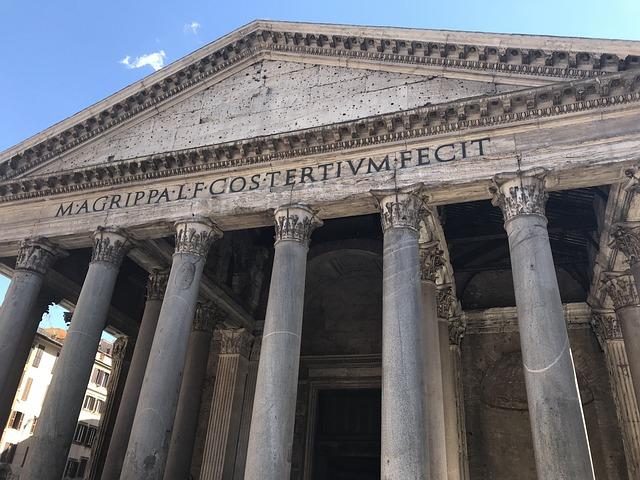
Tips 1: Mass is held at the Pantheon at 5 PM on Saturdays and 10:30 AM on Sundays.
Tips 2: If you visit the Pantheon at noon, you can witness a ray of sunlight shining through the oculus. See the photo below.
Website: www.pantheonroma.com
Open Hours: 8:30AM – 7:30PM Monday – Saturday, 9AM – 6PM Sunday.
Free to enter now, but soon will require €5 ticket to entry.
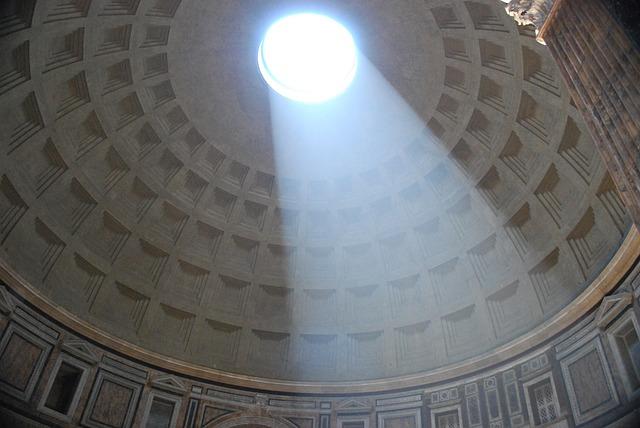
Trevi Fountain
The Trevi Fountain is a renowned landmark and is popular travel destination in Rome, known for its baroque style and impressive size. Designed by Nicola Salvi in 1732, the fountain features white marble and emerald-colored water, and is a masterpiece that fills an entire piazza. The extravagant ensemble is 20 meters wide and 26 meters high, depicting the chariot of the sea-god Oceanus being led by Tritons, accompanied by seahorses that represent the different moods of the sea.
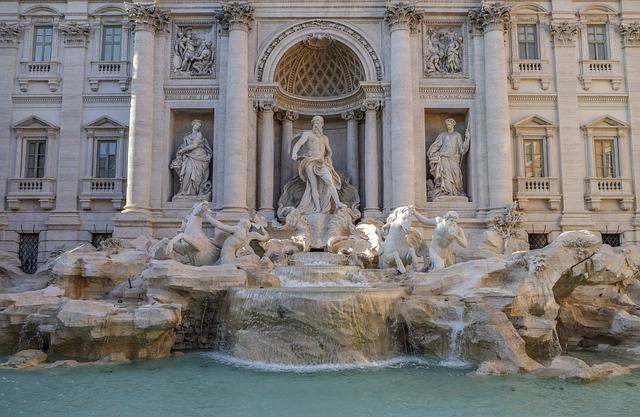
Tips 1: When it comes to tossing a coin at the Trevi Fountain, it is customary to use your right hand and throw the coin over your left shoulder while facing away from the fountain.
Tips 2: Visit early in the morning or late at night to avoid the crowds. The fountain can get very crowded during peak hours, especially in the summer months.
Open Hours: 24 hours
Free entry.
Piazza di Spagna & Spanish Steps
Piazza di Spagna and the Spanish Steps are iconic landmarks located in the heart of Rome. Piazza di Spagna is a bustling square, known for its beautiful Baroque fountain and the grand staircase that leads up to the Church of Trinità dei Monti. The Spanish Steps, built in 1725, are a grand staircase that consists of 135 gleaming steps designed by the Italian Francesco de Sanctis and lead up to the Church of Trinità dei Monti (http://trinitadeimonti.net/it/casa/).
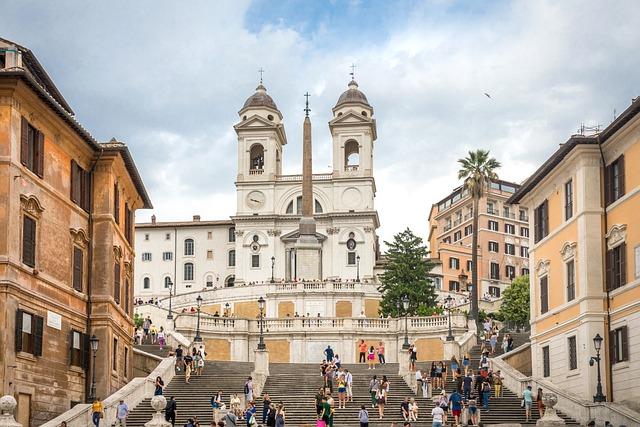
Visitors to Piazza di Spagna and the Spanish Steps can expect to see a variety of sights, including street performers, musicians, and vendors selling souvenirs. During the summer months, the steps are often crowded with tourists enjoying the view and taking pictures. The steps also provide a great vantage point for taking in the surrounding cityscape.
There are several popular landmarks in the area surrounding Piazza di Spagna and the Spanish Steps, including the Keats-Shelley House museum, which is dedicated to the lives and works of the Romantic poets John Keats and Percy Bysshe Shelley. The area is also home to many high-end fashion stores and designer boutiques, making it a popular destination for shoppers.
Tips: Please refrain from sitting on the steps, and note that it is prohibited to eat, drink, shout, sing, or make loud noises on the beautifully restored Spanish Steps. Violating these rules may result in a fine of up to €400.
Open Hours: 24 hours
Free entry.
Metro: Spagna Station
Piazza Navona
Piazza Navona is a lively public square in the heart of Rome, known for its stunning Baroque architecture, outdoor cafes, and bustling atmosphere. The square is located in the historic center of the city, and is home to several notable landmarks, including the Fountain of the Four Rivers and the Church of Sant’Agnese in Agone.
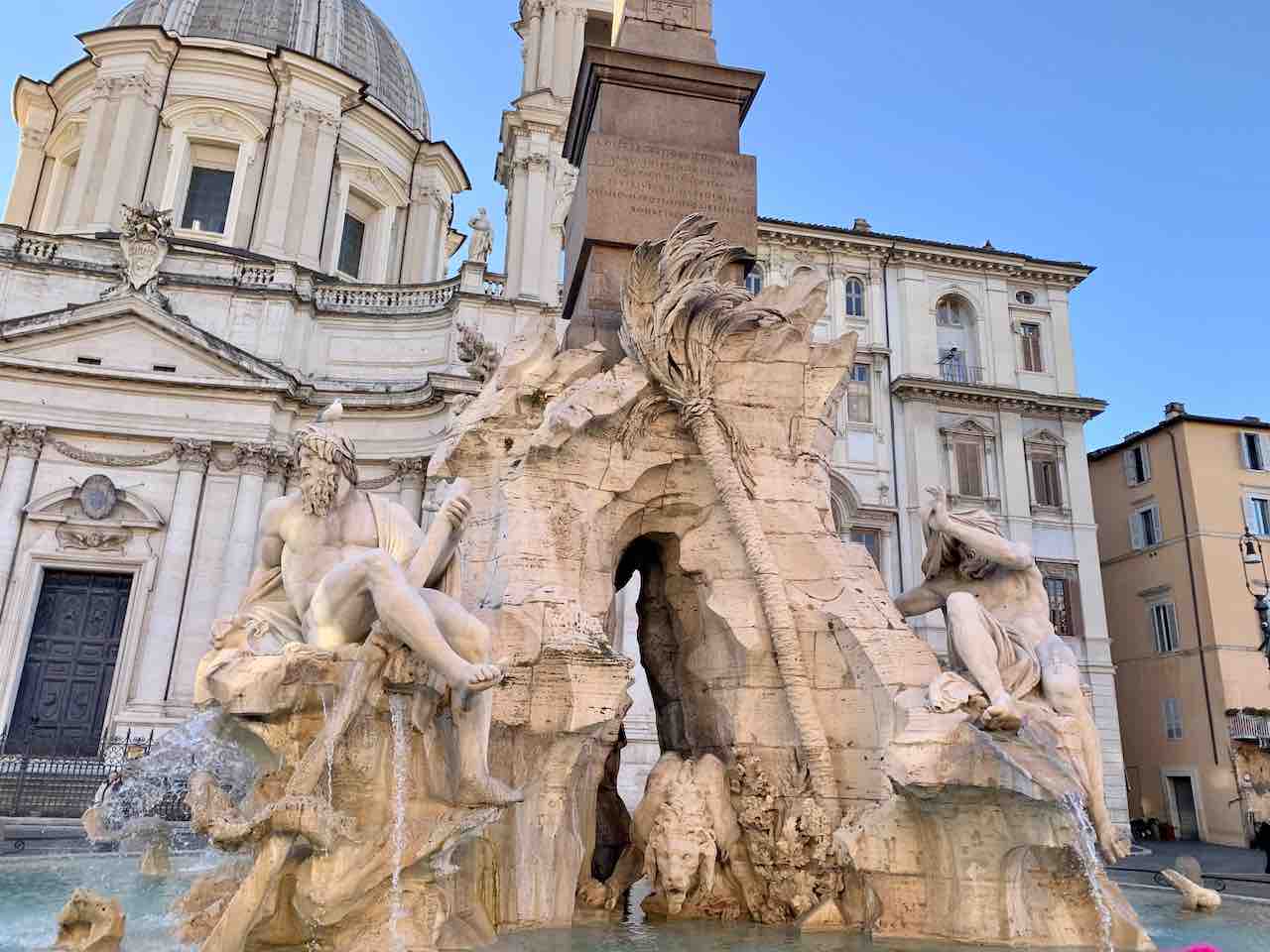
The focal point of Piazza Navona is the Fountain of the Four Rivers, which was designed by Gian Lorenzo Bernini in the 17th century. The fountain features four statues representing the world’s great rivers – the Nile, Danube, Ganges, and Rio de la Plata – and is surrounded by smaller sculptures and ornate Baroque architecture.
Open Hours: 24 hours
Free entry.
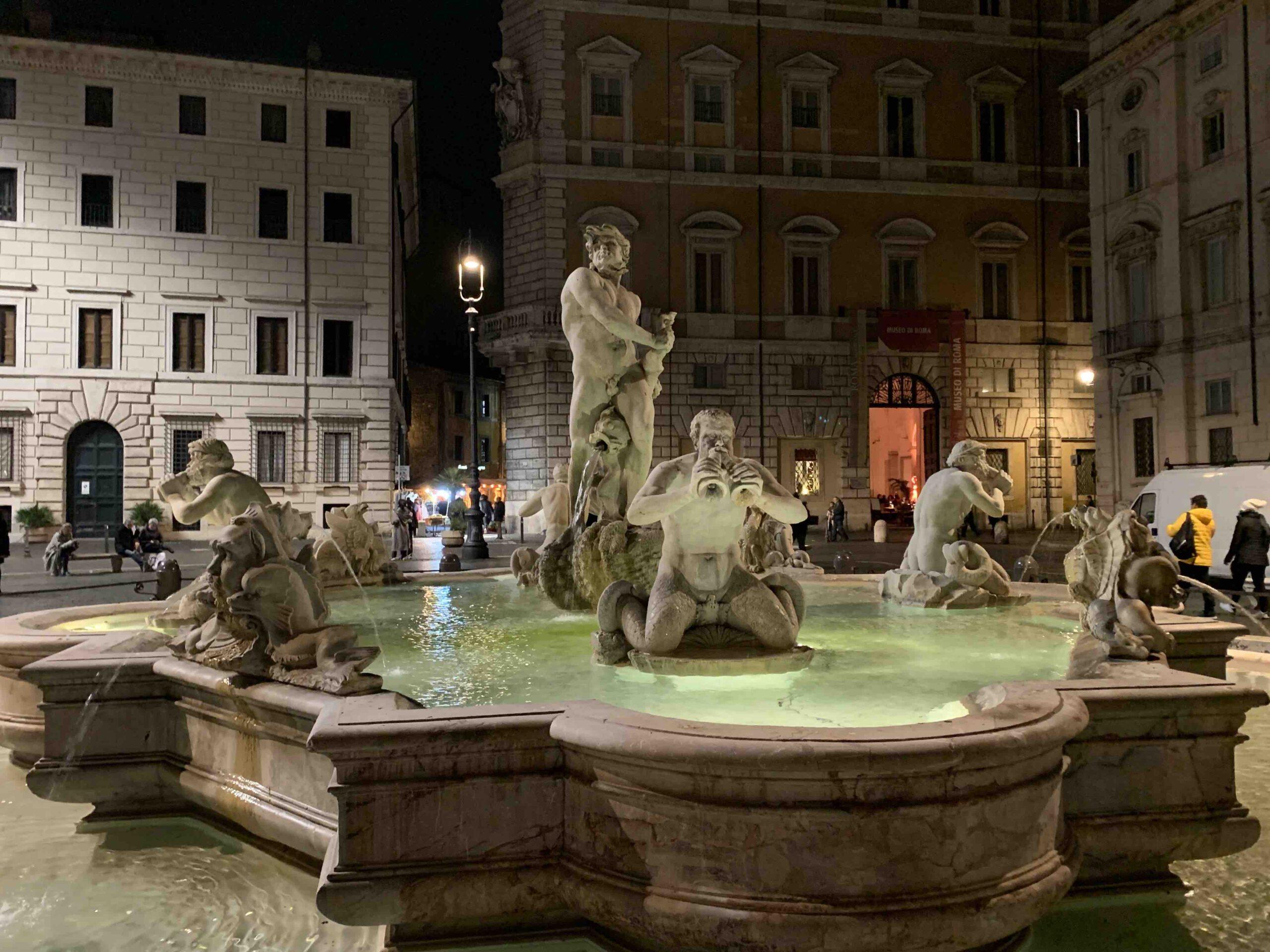
Castel Sant’Angelo
Castel Sant’Angelo is a historic fortress located on the banks of the Tiber River in Rome. Originally built as a mausoleum for Emperor Hadrian in the 2nd century AD, the fortress has served many purposes throughout its history, including as a papal residence and a prison.
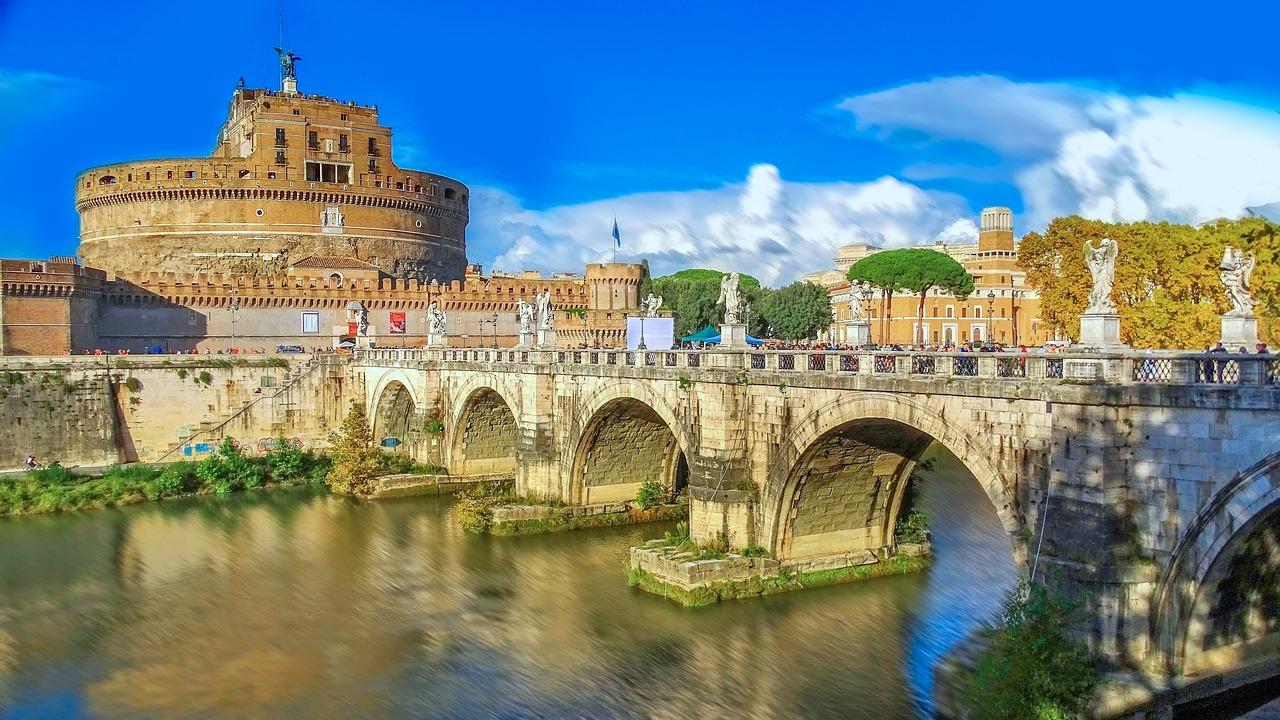
The fortress is a stunning example of Renaissance architecture, with its circular shape and towering cylindrical structure. Visitors can explore the castle’s many rooms and galleries, including the Papal Apartments, the Treasury Room, and the Angel’s Chamber. The castle’s rooftop terrace provides panoramic views of the city, offering a unique perspective on Rome’s iconic landmarks such as St. Peter’s Basilica and the Colosseum.
One of the highlights of a visit to Castel Sant’Angelo is the Passetto di Borgo, a secret passage that connects the fortress to the Vatican City. The passage was used by the popes to escape from danger and is now open to the public.
Traveler to Castel Sant’Angelo can also see a collection of weapons and armor in the castle’s Museum of the Arms, as well as exhibitions and events showcasing the castle’s history and significance.
Website: www.castelsantangelo.beniculturali.it
Open Hours: 9AM – 7:30PM Daily (last entry 1 hour before close)
Ticket Price: € 12.00
Bocca della Verità (Mouth of Truth)
The Mouth of Truth, or Bocca della Verità in Italian, is a unique and fascinating travel destination located in Rome. The Mouth of Truth is a large marble disc with a face carved into it, located in the portico of the Church of Santa Maria in Cosmedin.
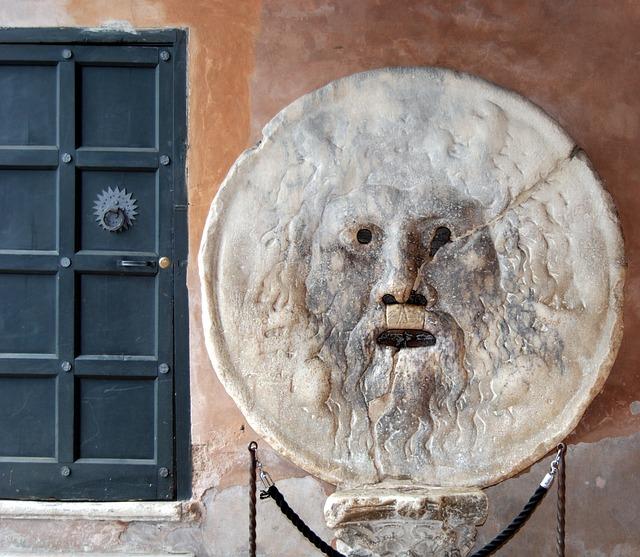
According to legend, the Mouth of Truth was used as a lie detector in ancient times. Those accused of lying would place their hand in the mouth of the stone face, and if they were lying, the mouth would close and sever their hand.
Today, visitors to the Mouth of Truth can still participate in the tradition of placing their hand in the stone face and telling the truth. The Mouth of Truth is a popular tourist attraction, and visitors can often expect to see lines of people waiting to participate in this unique tradition.
Free entry.
Borghese Gallery
The Borghese Gallery and Museum, located in the lush Villa Borghese gardens in Rome, is a must-visit travel destination for art enthusiasts and history buffs alike. Housed within a stunning 17th-century villa, the museum boasts an impressive collection of sculptures, paintings, and antiquities, meticulously curated by Cardinal Scipione Borghese. Among its most celebrated pieces are works by renowned artists such as Bernini, Caravaggio, Raphael, and Titian.
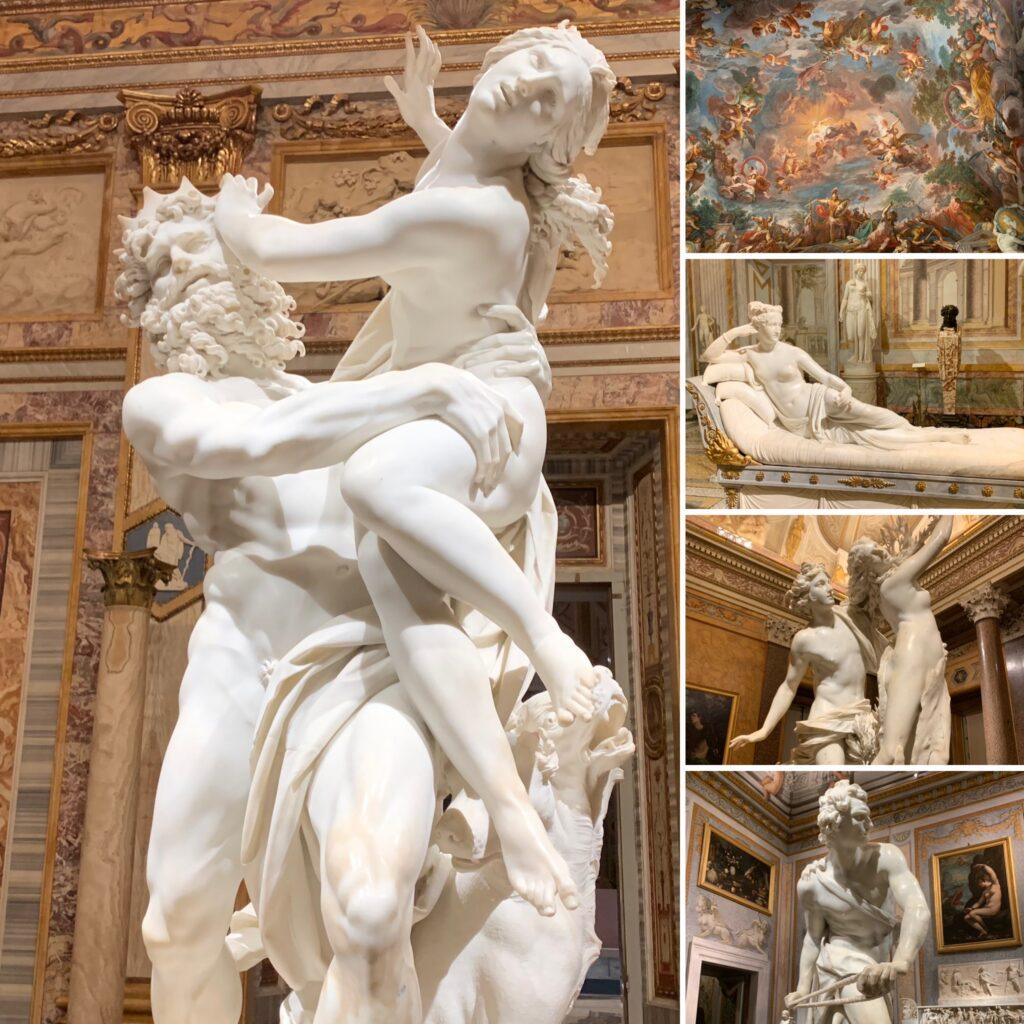
- Ticket: https://galleriaborghese.beniculturali.it/en/visita/info-biglietti/
- Ticket Price: Standard/Reduce €13.00 / €2.00 + Online Reservation: €2.00, Free under 18-year old.
- Open Hours: 9am – 7pm, close on Monday, the last entrance is 5.45 p.m
- Closed 25th December, 1st January.
Tips: The location is relatively far from other attractions. The last entrace (5.45 p.m)’s ticket price is cheaper. You should still have enough time to explore all the exhibits.
Appendix: Roman Empire’s Historical and Cultural Significance
Once the epicenter of the Western world, Rome’s remaining ruins and relics of its remarkable empire still captivate visitors today. Strolling through the Roman Forum, marveling at the Colosseum, admiring the Pantheon, and wandering along the Appian Way all provide deeply memorable, educational, and inspiring experiences. Witnessing the remnants of a once-mighty civilization that has since vanished is a profound and humbling encounter that everyone should experience.
Rome, often referred to as the Eternal City, is a treasure trove of historical and cultural significance that has shaped the course of Western civilization. As the birthplace of the Roman Empire and the heart of the Catholic Church, Rome has played a pivotal role in the development of politics, art, literature, and religion for over two millennia. Travel to Rome is essential to fully appreciate and understand its immense historical significance.

The city’s rich past is evident in its stunning architectural landmarks, such as the ancient Roman Forum, where political and social life thrived; the Colosseum, a testament to Rome’s prowess in engineering and entertainment; and the Pantheon, an engineering marvel and a symbol of Roman ingenuity.
In addition, Rome is also home to the Vatican City, an independent city-state and the spiritual center of the Catholic Church, housing St. Peter’s Basilica, the Sistine Chapel, and countless artistic masterpieces.
Rome’s cultural significance extends beyond its iconic landmarks. The city has been a muse to countless artists, writers, and thinkers, fostering the growth of various artistic movements like the Renaissance and Baroque periods. The city is adorned with beautiful piazzas, elegant fountains, and charming cobblestone streets, all reflecting the rich tapestry of Rome’s cultural heritage.
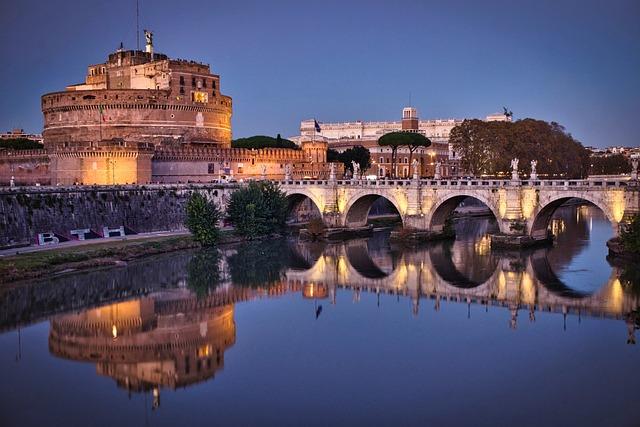
In Rome, history and modernity coexist in a captivating blend of the past and the present, where visitors can experience the city’s vibrant energy while delving into its awe-inspiring legacy. Its enduring historical and cultural significance makes Rome an essential destination for travelers seeking to understand the roots of Western civilization and appreciate the countless contributions Rome has made to the world.

